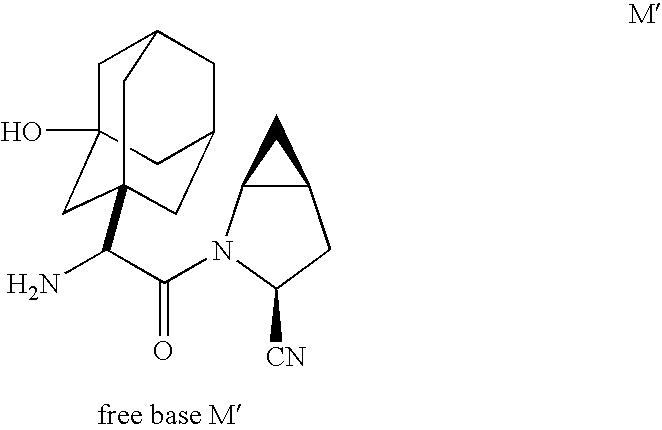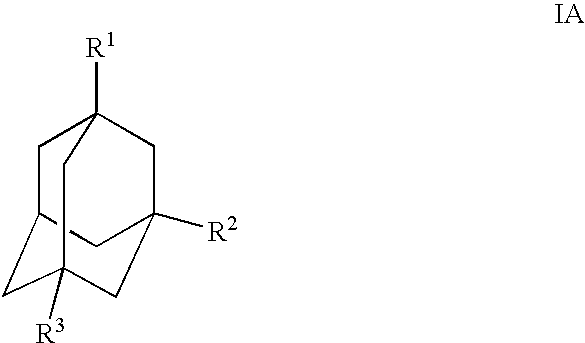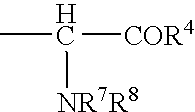Methods and compounds for producing dipeptidyl peptidase IV inhibitors and intermediates thereof
a technology of dipeptide peptide and inhibitor, which is applied in the direction of drug composition, immunological disorders, metabolism disorders, etc., can solve the problem of excessive degradation of exogenous peptide for continual therapeutic us
- Summary
- Abstract
- Description
- Claims
- Application Information
AI Technical Summary
Benefits of technology
Problems solved by technology
Method used
Image
Examples
example 1
Reductive Amination using an Extract from Recombinant Pichia pastoris Expressing Phenylalanine Dehydrogenase from Thermoactinomyces intermedius and Producing an Endogenous Formate Dehydrogenase
[0139]Recombinant Pichia pastoris frozen cells (2.25 kg) expressing phenylalanine dehydrogenase from Thermoactinomyces intermedius were added to deionized water (6.75 L) containing ammonium formate (28.65 g, 0.454 moles). After thawing, the cells were suspended using a Janke and Kunkel Ultra-turrax T25 homogenizer, adjusted to pH 7 with concentrated NH4OH and cooled with crushed ice to give a 25% w / v cell suspension in 50 mM ammonium formate. Cells were disrupted by 2 passages through a microfluidizer at 12000 psi and cell debris was removed by centrifugation at 20,000×g and 4° C. Supernatant, 7024 ml containing 230998 units or 124641 units of phenylalanine dehydrogenase activity as determined by Assay A (see Example 9) or Assay B (see Example 10), respectively, and 80080 units formate dehydro...
example 2
Reductive Amination using Heat-Dried Cells from Recombinant Pichia pastoris
[0142]A solution was prepared containing in a final volume of 4.0 ml at pH 8.0 (pH adjusted with NH4OH): 0.50 M ammonium formate, 0.25 M (3-hydroxy-adamantan-1-yl)-oxo-acetic acid, 1.06 mM AND, 1.00 mM dithiothreitol, and 250 mg recombinant Pichia pastoris heat-dried cells containing 32.7 units, as determined by Assay A, phenylalanine dehydrogenase and 24.6 units formate dehydrogenase. Preparation of Pichia pastoris heat-dried cells has been described by Hanson et al. (Enzyme and Microbial Technology 2000 26:348-358). The solution was incubated in a 50 ml Erlenmeyer flask at 40° C., 100 rpm for 4 days, then analyzed by HPLC. The solution contained 45.02 mg / ml (80% yield) (S)-amino-(3-hydroxy-adamantan-1-yl)-acetic acid.
example 3
Reductive Amination using Wet Cells from Recombinant Pichia pastoris
[0143]A solution was prepared containing in a final volume of 3.0 ml at pH 8.0 (pH adjusted with NH4OH): 0.415 M ammonium formate, 0.208 M (3-hydroxy-adamantan-1-yl)-oxo-acetic acid, 0.88 mM AND, 0.84 mM dithiothreitol, and 12.5% % w / v Pichia pastoris wet cells containing 6.06 units phenylalanine dehydrogenase, as determined by Assay A, and 12.8 units formate dehydrogenase. The solution was incubated in a 50 ml Erlenmeyer flask at 40° C., 200 rpm for 68 hours, then analyzed by HPLC. The solution contained 31.9 mg / ml (68% yield) (S)-amino-(3-hydroxy-adamantant-1-yl)-acetic acid.
PUM
| Property | Measurement | Unit |
|---|---|---|
| temperature | aaaaa | aaaaa |
| temperature | aaaaa | aaaaa |
| temperature | aaaaa | aaaaa |
Abstract
Description
Claims
Application Information
 Login to View More
Login to View More - R&D
- Intellectual Property
- Life Sciences
- Materials
- Tech Scout
- Unparalleled Data Quality
- Higher Quality Content
- 60% Fewer Hallucinations
Browse by: Latest US Patents, China's latest patents, Technical Efficacy Thesaurus, Application Domain, Technology Topic, Popular Technical Reports.
© 2025 PatSnap. All rights reserved.Legal|Privacy policy|Modern Slavery Act Transparency Statement|Sitemap|About US| Contact US: help@patsnap.com



